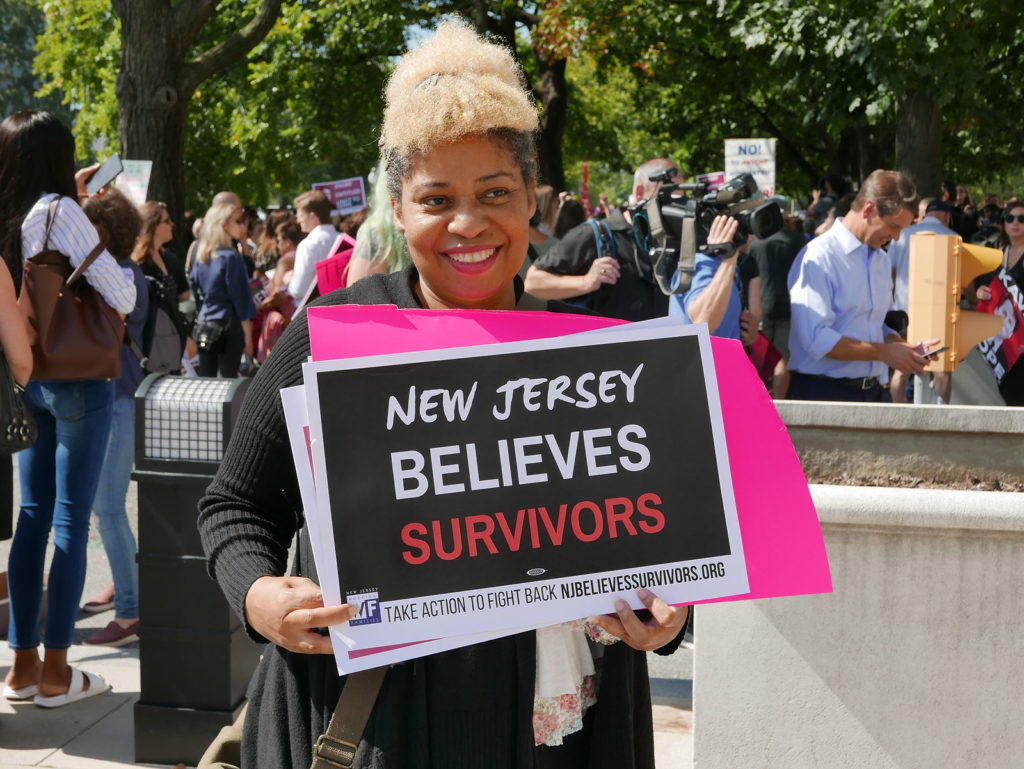At a recent congressional briefing in Washington, leaders of the National Domestic Violence Hotline reported their busiest year to date—with 573,630 hotline calls and texts in 2018 marking a 36 percent increase since the year prior and an all-time high since its inception in 1966.
Like cheeseburgers, shopping malls and apple pie, violence against women in the U.S. is a cultural staple—but even in the wake of widespread and amplified conversations around sexual violence and harassment, we are hesitant to acknowledge that rape culture is our culture.

In the U.S., instances of domestic violence in the media are typically framed as either part of a broad public health problem or as the actions of individual pathological perpetrators in a specific context. Rarely do we talk about gender-based violence as a phenomenon that is created by gender norms and reproduced by American cultural values, including the glorification of violence in mass-consumed American movies and video games.
“Culture” is often cited as the cause of violence against women in the global south—with western media quick to highlight the gap between “tradition” and “modernity,” “barbarity” and “civilization,” “backwardness” and “progress”—but culture is absent in conversations about gender-based violence here at home. We underestimate the effect of culture on “our” actions, while exaggerating the effects on “others.”
Dowry murder in India is often portrayed by media outlets as an innate facet of Indian culture, in which oppressed women are burned to death by their husbands and in-laws. Framed as a “cultural practice,” not a “crime,” it is portrayed as a result of the cultural context in which it takes place. Yet this “cultural phenomenon” may be happening at a rate roughly proportional to domestic violence murders in the U.S.
In 2016, studies reported 1,110,378 dowry-deaths in India per its 1.324 billion population; in the U.S., studies showed 1,800 domestic-violence deaths per 323.4 million. The proportions are not the same, but scholar Uma Narayan reasons that the gap in the numbers can be explained by language: because “dowry murder” is common lingo in India, it is more likely to be reported, but in the U.S., we don’t have a succinct term for “domestic violence murder,” limiting data collection on the phenomenon, and the data available is based on conviction, while Indian data is based on suspected cases, further suggesting that intimate-partner murders may be just as common a “practice” here and abroad.
Honor killings, predominantly identified in Muslim communities in the Middle East and South Asia, are typically defined as the murder of a female child by her devoutly traditional/religious parents or male relatives, catalyzed when a child bends towards “modernity.” Donald Trump’s 2017 Muslim Ban invoked honor killings two times—once to condemn the “practice” committed by “foreign nationals,” and a second time to mandate reporting and data collection on honor killings. In doing so, the executive order he issued associated child-murder with Middle Eastern and South Asian immigrants, using the term “honor killing” to effectively distinguish one type of “culturally-specific” gender-based violence from all others, and to reinforce the trope of radical religious violence perpetrated by Muslim men.
But what about child-murder, or filicide, in the United States? Approximately 500 children are murdered by their parents every year in the U.S. Media coverage of such instances of American filicide are described as unthinkable tragedies caused by individual insanity, because it would be ridiculous to label American filicide a part of “American culture,” yet Islam is not spared this heinous connection—which correlates individual murderers to an entire culture or religion they are understood to represent.
This past April, following the Justice Department’s refusal to defend prohibition of Female Genital Cutting/Mutilation (FGC/FGM) at the federal level, the public was outraged. Hillary Clinton tweeted to condemn the practice, claiming FGC as a violation of the “health and human rights of women and girls around the world.” In the heated FGC debate, some, like Clinton, argue that FGC serves to barbarically police and oppress women, threatening their health and removing their right to sexual pleasure.
Yet others argue that condemning FGC invokes a double standard: Definitions of “unacceptable” bodily modifications are only used in reference to FGC, not common Western practices. Intersex surgeries are non-medically necessary procedures performed without the consent of the infant patients, and they are standard protocol in the western medical community. Female genital cosmetic surgery is rapidly growing in popularity, and is expanding to an ever-younger population. According to the WHO’s definition of FGC, an elective labiaplasty would technically be considered Type 2 FGM, as would any other form of plastic surgery or any piercings, and yet female genital cosmetic surgery is not labeled as a violation of human rights.
I am by no means arguing that bodily modification without consent is acceptable in any form. I am arguing that there is a double standard when we talk about violence against women—depending on the race, ethnicity and/or nationality of the perpetrator—and that this double standard breeds prejudice while allowing western communities to turn a blind eye to our own home-grown culture of violence against women.
This disparate way of thinking about violence against women is not just an international issue. It’s a pressing national problem. The reauthorization of VAWA this April, which included provisions for early prevention education, represents ongoing measures to reduce gender-based violence at its source—yet the vast majority of domestic violence services are still focused on responses to violence, direct services to survivors and/or prevention at the policy-level.
Addressing a problem once it has already happened is not going to make that problem go away. We have to travel further upstream.
The U.S. has not been afraid to provide cultural explanations for violence against women on behalf of other nations. It is time we point that critical lens onto ourselves.
Which aspects of our culture have gone unexamined and unchallenged in the discussion of violence against women? We won’t get closer to figuring out how we disrupt them until we ask.





